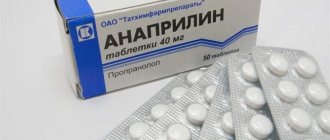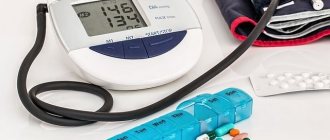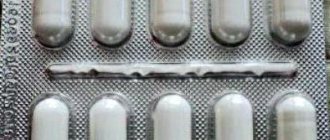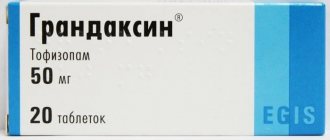The modern pharmacy market offers many medications that are used to treat cardiovascular pathologies. Most of them contain one or another active substance, synthesized in the laboratory. The substance lappaconitine hydrobromide is popular in cardiology.
This article provides general information about this substance: what it is, how it works, and in what area it is used. The most popular products based on it, their mechanism of action and effect on the human body are also discussed in detail.
General information about the substance
What is lappaconitine hydrobromide? This chemical substance is an alkaloid, which is obtained from a plant of the buttercup family - aconite whitemouth. It belongs to the medicinal group of antiarrhythmic drugs. Such drugs can normalize heart rhythm and also have a beneficial effect on blood pressure.
Release forms and prices
This substance is included in many medications, which are available in the form of a solution for intravenous or intramuscular injection, as well as in the form of tablets. The cost of funds in this group is not very high, so they are available to almost all categories of the population. The table shows the main forms of products based on lappaconitine hydrobromide and their approximate cost (Table 1).
Table 1 - Forms and costs
| A drug | Cost, rub. |
| Allapinin (25 mg) | 440-630 |
| Allaforte (25 mg) | 370-1300 |
| Allaforte (50 mg) | 520-1200 |
| Allarhythm | 315-600 |
Mechanism of action
The pharmacodynamics of drugs based on lappaconitine hydrobromide is to block sodium channels in the membranes of cardiac muscle cells. This leads to a slowdown in the conduction of the cardiac ventricles, reducing the refractory periods of the atria and other structural units of the heart. The substance has the following effects:
- antispasmodic;
- coronary dilator;
- m-anticholinergic;
- anesthetic;
- calming.
Functions of muscle cell membranes
At the same time, this alkaloid does not have a negative effect on heart rate and blood pressure. The substance is synthesized in the liver, with bioavailability of about 40%. When used internally, the pharmacological effect is achieved after an hour, when administered intravenously - after 20 minutes.
Maximum concentration is achieved after 2-4 hours. The duration of action is about 8 hours. It is excreted by the kidneys, therefore, in some pathological conditions (for example, renal failure), the elimination period increases several times.
Indications and restrictions
For what conditions is the substance used? There are special indications for its use.
Among them:
abnormal heart rhythm;- extrasystole of the ventricles and supraventricular structures;
- tachycardia in the form of paroxysms of the ventricles of the heart;
- paroxysmal atrial fibrillation;
- arrhythmia due to emotional overload and other pathologies.
Such drugs should be taken only when prescribed by a doctor, as they have many contraindications. It is not recommended to take medications for arrhythmia if the following phenomena occur:
- individual intolerance to the substance;
- severe pathologies of the liver or kidneys;
- post-infarction conditions;
- heart failure;
- hypertrophy of the heart muscle (myocardium);
- persistent increase in blood pressure;
- various cardiac abnormalities;
- cardiogenic shock;
- disruption of the passage of the sinus impulse through the sinoatrial junction (sinoatrial block);
- atrioventricular block.
It is prohibited to use drugs that contain lappaconitine bicarbonate for children under adulthood, pregnant women and nursing mothers, since they have not been studied and therefore safety has not been proven.
Such drugs are prescribed with extreme caution for the following conditions:
- peripheral circulatory disorders;
- bradycardia;
- glaucoma;
- poor exchange of electrolytes (potassium, calcium, magnesium).
You should not take drugs containing lappaconitine bicarbonate at the same time as other antiarrhythmic drugs. This may lead to negative consequences due to the increased effect of such drugs.
Negative consequences and precautions
What side effects can such a chemical cause? As a rule, when used adequately, drugs based on it are well tolerated by patients. Only in rare cases the following side effects are observed:
- headache, dizziness;
- double vision;
- neuromuscular disorders (ataxia);
- allergic reactions (for example, redness of the facial skin, itching and burning);
- the appearance of cardiac disorders.
With prolonged use of the drug, sinus tachycardia may develop, when the heart beats abnormally fast (more than 100 beats per minute).
In order not to cause harm or provoke negative reactions, you should follow some precautions. Among them:
- It should be taken only if indicated under the supervision of a physician.
- The dosage should be carefully observed. The maximum dose per day is no more than 300 mg of the chemical substance. In the presence of certain diseases (for example, renal failure), the dosage must be reduced.
- The duration of treatment is determined by the attending physician. Typically the therapeutic course lasts about 3-6 months.
The drug is administered intravenously very slowly. The procedure can be repeated only after 6 hours.- Treatment of patients considered at risk is carried out only in a hospital setting. It is important to monitor the heart rhythm using an ECG.
- If side effects occur, the dosage should be reduced. If tachycardia is present, beta-blockers are administered.
Drugs that contain this chemical are classified as antiarrhythmic drugs. They help restore normal heart rhythm in various heart diseases. You should take such medications only if prescribed by a doctor, as they can cause side effects and negative effects.
Lappaconitine hydrobromide
special instructions
Use with caution in patients with an artificial pacemaker, AV blockade of the first degree, chronic heart failure FC I-II according to the NYHA classification, intraventricular conduction disorders, CVS, bradycardia, severe peripheral circulatory disorders, angle-closure glaucoma, benign prostatic hypertrophy, impaired conduction along Purkinje fibers, blockade of one of the branches of the His bundle, impaired water and electrolyte metabolism (hypokalemia, hyperkalemia, hypomagnesemia).
Lappaconitine hydrobromide should be used with extreme caution in patients with coronary artery disease and stable angina pectoris, since one of the predisposing factors for the proarrhythmic effect of class 1C antiarrhythmic drugs is transient myocardial ischemia and high heart rate. Use with caution in combination with other antiarrhythmic drugs due to the increased risk of proarrhythmic effects.
Lappaconitine hydrobromide is intended for long-term preventive antiarrhythmic therapy. The limited clinical experience does not allow us to recommend the use of lappaconitine hydrobromide orally to relieve paroxysms of supraventricular and ventricular tachycardia.
Before starting use, it is necessary to eliminate disturbances in water-electrolyte metabolism; during the treatment period, monitoring of the water-electrolyte balance of the blood is necessary.
Before starting use and during treatment, an ECG and clinical examination should be performed to early detect side effects, assess the effectiveness of the drug and determine the need to continue therapy.
In patients with an artificial cardiac pacemaker installed, the threshold for its stimulation may increase. Pacemakers should be checked and reprogrammed if necessary.
If headache, dizziness, or diplopia develop, the dose should be reduced.
If sinus tachycardia occurs during long-term use of the drug, the use of beta-blockers (in individually selected doses) is indicated.
When using class 1C antiarrhythmic drugs in patients with severe organic changes in the myocardium, serious adverse reactions may occur. The use of lappaconitine hydrobromide in such patients is possible only after a careful assessment of the expected benefits and possible risks to the patients, and should be carried out under the supervision of a cardiologist with experience in the treatment of relevant cardiac arrhythmias.
Impact on the ability to drive vehicles and machinery
During the treatment period, care should be taken when performing potentially hazardous activities that require special attention and quick reactions (driving vehicles and working with moving mechanisms).
Products based on lappaconitine hydrobromide: instructions for use
There are many products containing this substance, which are widely used to treat various heart pathologies that are accompanied by disturbances in its rhythm. Among them, the most popular are:
- Allapinin.
- Allarhythm.
- Allaforte.
Preparations based on lappaconitine hydrobromide are antiarrhythmic drugs that are used to normalize heart rhythm. They have the same pharmacological action. Let's consider each of them in detail - their scope, action, indications and contraindications, as well as possible side effects and precautions.
Allapinin
This is a medicine that is classified as antiarrhythmic. In addition to the main substance, Allapinin contains additional components, including sucrose. This should be taken into account before prescribing the drug to patients with diabetes mellitus and individual intolerance to such a substance.
It is produced in several dosage forms. Depending on the form of release, the method of application and dosage of Allapinin is determined:
Pills. They are white in color and round in shape. One tablet contains 25 mg of the active ingredient. The dosage is determined by the attending physician. As a rule, take 1 tablet every 6 or 8 hours (3-4 pieces per day). It is possible to increase the dose to 2 tablets if there is no effect, which are taken according to the same regimen. The tablets are taken orally with water, half an hour before meals.- Solution for internal administration. This medicine is administered in 2 ways:
- intravenously - a medicine is injected very slowly into a vein at a dosage of 0.4 mg per kilogram of the patient’s weight;
intramuscularly - an injection is given into the muscle area, the dosage is 0.3 mg per kg of a person’s weight.
Before administration, the drug should be diluted with a special solution of sodium chloride. This medicine is administered over 5 minutes, the procedure can be repeated after 6 hours. The maximum daily dose is 300 mg of the active ingredient. The effect after such administration is observed after 15 minutes, the effect of the medicine lasts for several hours.
Indications for use include heart rhythm disturbances of various origins. Children under 18 years of age, pregnant women (especially in the first trimester), and nursing mothers should not take the tablets.
The use of the drug is also contraindicated in case of severe renal and hepatic pathologies, heart failure, abnormalities of the cardiac structure, post-infarction cardiosclerosis and individual intolerance to the active substance or auxiliary components.
Side effects often include cardiac disorders, allergic reactions (redness of the skin), and neuropsychiatric abnormalities (dizziness, headache, ataxia, diplopia).
In order not to provoke negative reactions, you should adhere to some precautions:
- Use the drug only if indicated.
- Do not exceed the dosage. Use the drug correctly.
- You should not take the drug for too long a time.
- Store the medicine correctly and do not use it after the expiration date.
- If side effects occur, you should reduce the dosage or completely abandon the drug, replacing it with another drug with a similar effect.
Allapinin is a potent antiarrhythmic agent. In order for its use to be safe and effective, it is necessary to follow the recommendations for its use, and also not to exceed the dosage.
Allarhythm
This drug is a structural analogue of Allapinin. It has the same composition and action. Also indicated for heart rhythm disturbances that are caused by various heart diseases or emotional overload. It has the same side effects and contraindications.
The drug is produced in two forms, each of which has its own characteristics of purpose and administration:
Types of Heart Rhythm Disorders
Tableted. These are tablets with a dosage of the active component of 25 mg. Apply as follows:
- three tablets per day
- the maximum dose is two tablets three times a day (you cannot take more than 150 mg at a time, and no more than 300 mg per day).
if there is no effect, increase to four tablets (1 g of active ingredient per day);
Negative reactions from the gastrointestinal tract are possible. Also, the drug can cause dizziness, loss of strength, and disruption of the heart muscle, so while taking the drug you need to be extremely careful about any changes in your health. If negative reactions occur, the dose is reduced, but if this does not help, the specialist decides to discontinue the drug.
Allaforte
Allaforte is a long-acting drug and this compares favorably with the drugs mentioned above. Available in the form of white or yellowish round tablets. It also contains lappaconitine hydrobromide at a concentration of 25 or 50 mg per tablet. Additional components have an improved effect for faster absorption and distribution of the drug.
With the help of Allaforte, heart diseases are treated that contribute to impaired depolarization and contraction of the heart. Indications for use are:
congenital anomalies of the structure of the heart, which lead to its overexcitation;- paroxysmal changes in cardiac activity;
- extrasystole and atrial flutter;
- tachycardia without changes in the heart muscle;
- arrhythmias of various origins.
Contraindications include:
- hypersensitivity to the active ingredient;
- persistent increase in blood pressure;
- heart blocks;
- cardiogenic shock;
- heart failure;
- cardiosclerosis;
- severe pathologies of the kidneys or liver;
- lack of lactose.
It is also not recommended to use the medicine:
- children under 18 years of age;
- pregnant women;
- nursing mothers.
The tablets are taken orally with water. The dosage for each patient is selected individually. The dosage is calculated as follows:
Start taking it with the minimum dosage - one 25 mg tablet every eight hours.- If after 2-3 days the therapeutic effect is not enough, then increase the frequency of taking 25 mg tablets - every 6 hours or two 5 mg tablets twice a day.
While taking the drug, it is important to regularly assess the condition of the myocardium through an ECG, which is performed two hours after taking the tablet.
In some cases, an overdose is possible. It is usually expressed in the appearance of:
- dyspeptic manifestations;
- dizziness;
- loss of strength;
- disorders of the visual organs;
- allergic manifestations;
- sinus tachycardia;
- disturbance of myocardial conductivity.
If there are signs of intoxication, symptomatic therapy is carried out, and in especially severe cases - artificial ventilation and cardiac massage.










